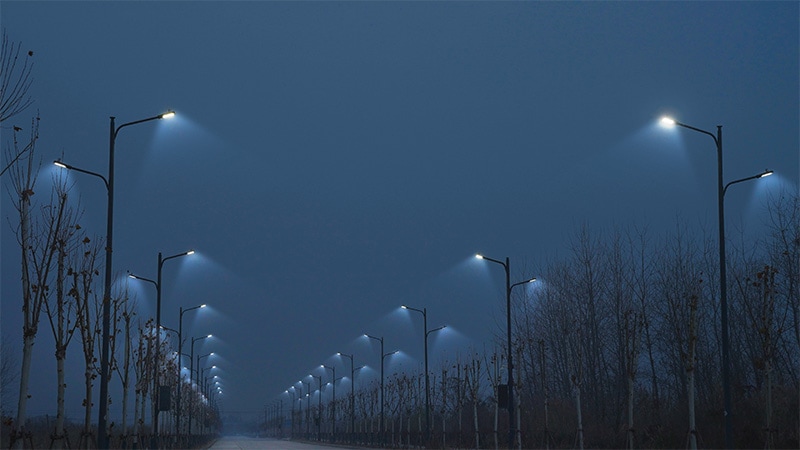28th March, 2023
28th March, 2023
In cities across Europe, winter nights are dark. A spiraling cost of living, unstable energy markets, and a growing need to make good on carbon reduction targets have pushed municipalities towards quick wins: turning off streetlights and limiting the illumination of public monuments and shopping areas. Two hundred of Berlin’s historic buildings and monuments have lost their nighttime illumination. In Paris, the lights of the Eiffel Tower, the Louvre, and the Petit Palais turn off when the tourists disperse. These initiatives are intended to save money and send a signal to the public that they, too, must play their part to reduce our dependence on Russian gas now, and on fossil fuels on the long term.
Urgent action is certainly needed. Europe meets around 25% of its energy demands with imports from Russia, which are no longer politically viable nor sustainable. In 2021 alone, the European Union imported 155 billion cubic meters of Russian gas, accounting for 45% of all its gas imports. In the past ten years, the EU has imported an average of €1 billion in fossil fuels per day. And worldwide, our addiction to fossil fuels cannot continue if we are to preserve hope of containing warming to 1.5C above pre-industrial levels.
Energy saving opportunity
While the energy transition continues to accelerate, efforts to reduce our consumption should be prioritized. However, stating that this is best achieved by switching off public lighting is also somewhat disingenuous. Lighting is one area where we can make extreme improvements to energy efficiency with relatively little cost or effort, without forgoing safe and well-lit urban spaces. Energy efficient LED lighting is cost effective, widely available, lasts longer, and has a smaller environmental impact than its conventional counterpart. In many cases, “plug and play” solutions make it possible to retrofit existing equipment and avoid extensive upfront costs. And yet, 35% of installed lighting worldwide still makes use of outdated conventional technology. In Europe, that is as much as 50%. And households do not need to follow the public example in this respect, as it is business and public sectors that lag behind consumers in LED transition. Indeed, it is much better to demonstrate the case for the energy savings consumers can achieve at home by modernizing remaining conventional lighting and other outdated technologies.
Harry Verhaar
Head of Global Public and Governmental Affairs at Signify
A city of 100,000 people can half the energy consumption of its public lighting by switching lights off for a few hours overnight. But it’s also possible to achieve an equally powerful energy saving by switching conventional lights to LED. When you add smart lighting features such as presence detection and dimming and remote management through a smart city connected lighting system, the saving could be as much as 92%. That is astonishingly more effective than turning off lights and brings with it improved functionality and quality of life for citizens.
Upgrading just 20% of all conventional EU light points to LED in public installations like schools, municipal buildings, and streets could generate yearly savings of approximately 9.7 TWh, equivalent to the annual electricity consumption of 2.7 million households. And along with the money saved, there are other significant advantages, like a potential 30% reduction in nighttime traffic accidents and a 21% decrease in street crime.

Smarter solutions
With the optimal solution of citywide connected LED lighting, cities can enjoy energy savings and improve their emissions profile, and even added benefits like preservation of dark skies when lighting is not being used – without any reduction in quality of life. Urban areas feel safer and more welcoming. And when street lighting is connected, the possibilities expand well beyond lighting itself. Sensor-equipped light poles can detect audio from an auto accident or gunshot, alert emergency services, and adjust lighting on the scene to assist recovery. Air quality sensors, enabled through the connected lighting infrastructure, can monitor pollution levels and provide insights for urban planners.
Of course, these public projects can be hard to achieve when budgets are stretched. Finance, too, demands greater innovation. For example, product as a service or shared ownership models can help lower capital investment and kick start projects hampered by slow-moving public finances.
Energy efficiency has an essential role in cutting greenhouse gas emissions and contributing to a more sustainable future for our planet. And if cities are to set an example, this should include making use of solutions that are both widely available, and highly effective- in lighting, in energy renovation of public buildings, and electrification of municipal fleets.
When we tell citizens that reducing energy consumption requires sacrifice, we risk fuelling unhelpful grudges and resistance that slow our progress against our bigger picture goals. On the contrary, by accelerating adoption of the plentiful, viable solutions at our fingertips, we can demonstrate that these measures are part of our progress to a smarter, more comfortable, and more sustainable way of life.
Find out more on how making the Green Switch can benefit your city and citizens, and our planet.
Signify Global Media relations - Professional Lighting
Claire Phillips
Tel: +44 7956 489081
Email: claire.phillips@signify.com
Signify (Euronext: LIGHT) is the world leader in lighting for professionals, consumers and the Internet of Things. Our Philips products, Interact systems and data-enabled services, deliver business value and transform life in homes, buildings and public spaces. In 2023, we had sales of EUR 6.7 billion, approximately 32,000 employees and a presence in over 70 countries. We unlock the extraordinary potential of light for brighter lives and a better world. We have been in the Dow Jones Sustainability World Index since our IPO for seven consecutive years and have achieved the EcoVadis Platinum rating for four consecutive years, placing Signify in the top one percent of companies assessed. News from Signify can be found in the Newsroom, on X, LinkedIn and Instagram. Information for investors is located on the Investor Relations page.
